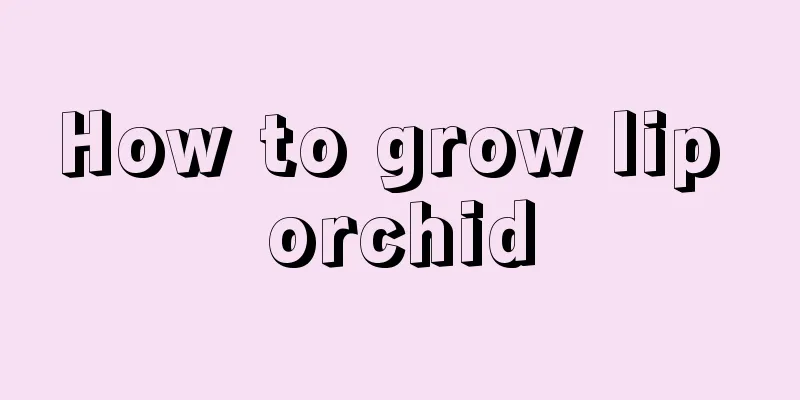How to grow lip orchid

The growth environment of lip orchidThe location for placing the lipped orchid potted plant should be chosen in a relatively shaded, ventilated and well-lit place. Ventilation and air permeability are less likely to cause insect pests, while sufficient light is necessary for plant photosynthesis and is critical to plant growth. Choose a cool place to avoid high temperature causing water to evaporate too quickly and insufficient humidity. Watering of lip orchidSummer is the best growing season for lipped orchids. Pay attention to ensure sufficient water, otherwise it will affect its growth and development. However, because orchids prefer relatively dry conditions, watering should not be too frequent. The principle should be "water when dry, stop when wet, and keep water moderately dry". When watering, make sure the soil in the pot is watered thoroughly and the entire pot soil remains moist, not half-dry and half-wet. If the soil matrix is highly hydrophobic, watering once every two to three days is sufficient. If the soil matrix has poor water absorption, watering is required once a day. In addition, it should be noted that watering is generally recommended in the early morning or evening, and it is best not to water at noon when the light is strongest. Mild boiled water is best, or slightly deionized water with a Ph value between 5.5-6 is also acceptable. It is recommended to use the spraying method for watering, which can both increase the air humidity and wash the leaves. Fertilization of Lip OrchidFertilize frequently in small amounts. Increase the frequency and reduce the amount of fertilizer applied each time, which will be more conducive to plant absorption. For healthy orchid plants that are in the vigorous growth period, you can apply thin liquid fertilizer once every 10-15 days. Liquid fertilizer is mainly composed of natural organic matter. Organic fertilizer is more comprehensive in nutrition and has no side effects on plants. It is the best choice for fertilization. Chemical fertilizers are not conducive to plant absorption and are mostly acidic, which can easily cause diseases and pests. |
Recommend
When is the best time to plant daylily? Planting method and cultivation time of daylily
Daylily is a vegetable that is eaten for its flow...
Cultivation methods and precautions of morning glory
1. Maintenance methods 1. Substrate selection: Mo...
How many days does it take for coriander to germinate?
Coriander, also known as cilantro, has a special ...
A complete list of causes of flower diseases!
environment Changes in climate, air humidity, ven...
What's wrong with the silkworms not eating or moving?
In rural areas of the south, many places have dev...
The efficacy and function of lichen
1. Nutritional supplement Lichens contain many be...
How to grow ginger on the balcony
Planting time It can be planted in the southern r...
Can I grow green radish at the bedside? Where should I put the green radish to get strong yin energy?
1. Is it possible? It not only beautifies the hom...
Differences between custard apple and sugar apple
one. Origin of the name The Chinese name of the s...
When is the best time to sow lupine seeds?
Lupine seed sowing time Lupine seeds are usually ...
How to choose a pot for orchids? Which pot is best for growing orchids?
1. What are the requirements of orchids for flowe...
How to take care of old succulent plants after they are beheaded
1. Apply to wound In order to help the incision h...
How to keep baby's breath in winter
temperature Winter temperatures are very importan...
Does alum root bloom?
Does alum root bloom? Many flower lovers like alu...
When does the blue snow flower bloom?
1. Flowering time In fact, its flowering time is ...









